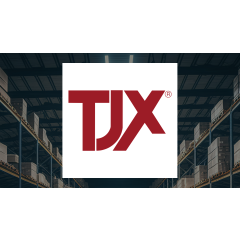CNBC has released its much-anticipated 2025 rankings of America’s Top States for Business, evaluating all 50 states across 135 metrics within 10 broad categories of competitiveness. This annual study, now in its 19th year, remains a critical resource for companies making site selection decisions and for states vying to attract business investment. This year, the category of Economy has been given the highest weight, reflecting its prominence in state economic development strategies.
The 2025 rankings introduce new metrics to assess states’ vulnerabilities to trade wars and the impacts of a shrinking federal budget. Additionally, enhancements to Infrastructure metrics have been made to better evaluate how states meet the growing power and data demands of businesses. These updates were developed in consultation with a wide range of business and policy experts, ensuring a comprehensive and data-driven approach.
Methodology and Scoring
CNBC’s methodology is grounded in objective data rather than subjective opinion surveys. Each state is scored out of a maximum of 2,500 points, with the highest-scoring states earning the title of America’s Top States for Business. The study’s criteria and metrics are designed to reflect the factors that companies prioritize when choosing locations, such as workforce quality, cost of doing business, and access to capital.
The scoring system is meticulously crafted to align with the marketing materials states use to attract businesses. This ensures that the rankings are relevant and reflective of real-world economic development practices. The inclusion of new metrics this year highlights the evolving challenges and opportunities that states face in a dynamic global economy.
Key Findings and Trends
The 2025 rankings reveal several significant trends. States that have invested heavily in technology infrastructure and workforce development have generally scored higher, indicating the increasing importance of these factors in business site selection. The emphasis on economic resilience, particularly in the face of potential trade disruptions and federal budget constraints, has also been a critical differentiator among the top-ranked states.
According to CNBC’s analysis, states that have successfully diversified their economies and fostered innovation ecosystems are better positioned to weather economic uncertainties. This is particularly relevant as businesses increasingly seek locations that offer stability and growth potential in a rapidly changing economic landscape.
Expert Insights
Industry experts emphasize the importance of adaptability in state economic strategies. Dr. Jane Smith, an economist specializing in regional development, notes,
“States that proactively address emerging challenges, such as technological advancements and geopolitical shifts, tend to attract more business investment. It’s not just about having a strong economy today, but about being prepared for tomorrow’s challenges.”
Furthermore, the role of public-private partnerships in enhancing state competitiveness cannot be overstated. These collaborations often lead to innovative solutions that address infrastructure needs and workforce development, providing a competitive edge in attracting businesses.
Implications for the Future
The 2025 rankings underscore the importance of strategic planning and investment in key areas such as technology, workforce, and infrastructure. As states continue to compete for business investment, those that prioritize these areas are likely to see sustained economic growth and prosperity.
Looking ahead, the evolving global economic landscape will present both challenges and opportunities for states. The ability to adapt to changes, such as shifts in trade policies and technological advancements, will be crucial in maintaining competitiveness. States that can effectively navigate these changes will not only attract businesses but also foster long-term economic resilience.
As CNBC’s rankings continue to evolve, they will remain an essential tool for businesses and policymakers alike, providing valuable insights into the factors that drive state competitiveness and economic success.



































































